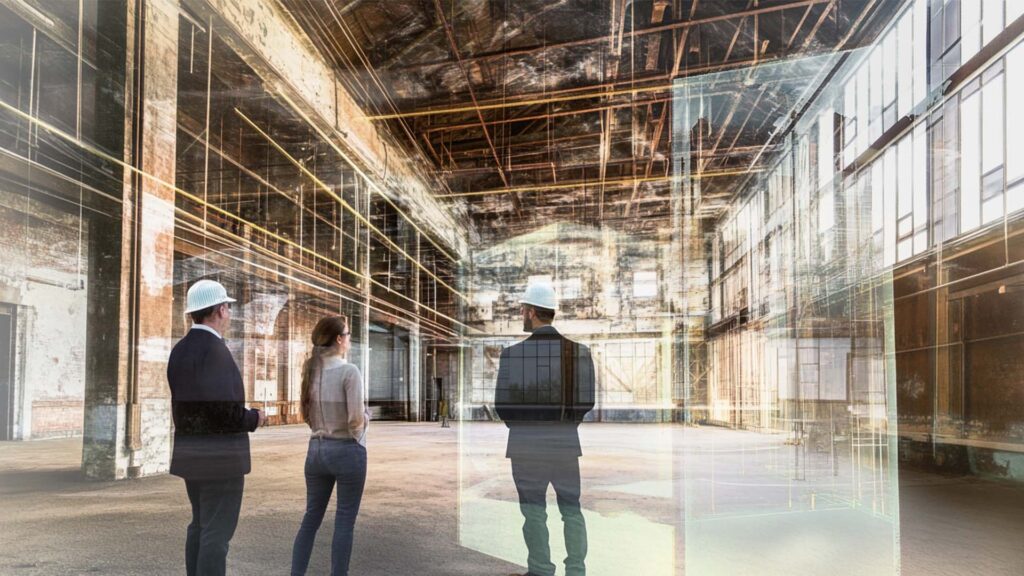The increasing global focus on sustainability and creative use of materials is highlighting the value of repurposing existing commercial buildings. In lieu of demolishing structures imbued with history and character, innovative developers and entrepreneurs are realizing the value in their transformation. Whether transforming abandoned cotton mills into modern apartments or the converting outdated shopping malls into mixed-use developments, repurposing provides multifaceted benefits. The perks of commercial redevelopments include economic, environmental, and aesthetic advantages.
Financial Advantages
A key driver for repurposing is the inherent resourcefulness it offers, beginning with significant financial advantages. The monetary appeal is immediate, primarily due to significant upfront cost reductions. Leveraging the existing structural integrity of a building often bypasses the substantial expenses of new construction. This economic advantage can accelerate project timelines and ultimately lead to a more profitable return on investment. Moreover, access to established infrastructure, including utilities and transportation systems, further streamlines the development process and reduces initial outlays.
Aesthetic Appeal
The appeal of repurposing extends far beyond dollar signs, offering an unparalleled opportunity to embrace a location’s history and identity. Existing buildings frequently showcase unique architectural elements and a deep-rooted sense of place that is unattainable with contemporary construction. Features such as exposed brickwork, dramatic timber beams, and vaulted ceilings have become sought-after design choices. Buildings that have these are enticing to tenants and patrons who favor classic character and a unique ambience. This inherent authenticity can be a powerful marketing advantage, setting a repurposed property apart from its more standardized counterparts.
Environmental Benefits
Choosing to repurpose building provides substantial environmental benefits. By reusing existing structures, we significantly reduce the energy-intensive processes of new construction and conserve substantial embodied energy. This approach lessens the demand for precious resources like timber and steel, mitigating the impacts of extraction and manufacturing. Furthermore, it’s a key strategy for diverting construction waste from landfills, while the frequent use of local or reclaimed materials further minimizes transportation emissions, reducing the carbon footprint of these projects.
Potential Challenges
Although the benefits of repurposing are considerable, the process can be intricate. Comprehensive due diligence is essential, including a thorough assessment of the building’s structural soundness, identification of potential environmental risks like lead paint or asbestos, and skillful maneuvering through intricate zoning requirements. To effectively address these complexities, partnerships with seasoned contractors, architects, and engineers specializing in adaptive reuse are crucial.
Balancing History and Modernity
The design phase requires a creative vision that pays homage to the building’s past while catering to modern needs. Striking the right balance between preserving historical elements and incorporating contemporary amenities is key. For instance, an old factory could maintain its high ceilings and exposed brick walls but incorporate contemporary art galleries and a vibrant cafe. This delicate decision-making process often involves carefully selecting which historical features are most significant and then thoughtfully integrating modern elements that complement the existing character.
Managing the Mess
During the transformation process, easily disposing of large amounts of waste from demolition and renovation is a significant consideration. Whether it’s removing old interior walls, outdated fixtures, or accumulated debris, efficient waste removal keeps the project on schedule and within budget. Developers often find that roll off dumpster rentals provide a practical and affordable way to manage this waste.
Conclusion
Repurposing commercial spaces represents a forward-thinking and sustainable strategy for real estate development. Through imaginative reinvention, we conserve precious resources, preserve historical architecture, and cultivate unique, versatile spaces that enrich our communities. As urban centers continue to evolve, the ingenuity to revitalize older buildings will be increasingly crucial in defining the future of our cities.






